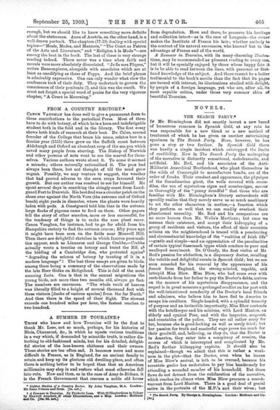FROM A COUNTRY RECTORY.*
CANON VAUGHAN has done well to give a permanent form to these contributions to the periodical Press. Most of them have to do with botany, of which he is a keen and indefatigable student both in the field and in the library. The first essay shows both kinds of research at their best. Dr. Cahn, second founder of the College that bears his name, relates how in a famine year (1555) there grew on the Suffolk coast between Aldeburgh and Orford an abundant crop of the sea-pea which saved many people from starring. The Bishop of Norwich and other persons of note went to see the marvel for them- selves. Various authors wrote about it. To some it seemed a miracle ; others naturally rationalised it. The peas had always been there, but not thought of till the need grew urgent. Possibly, we may venture to suggest, the weather that had proved adverse to the corn crops favoured their growth. But our author was resolved to see for himself. He spent several days in searching the shingly coast from Land- guard Fort to Dunwich. His bestfind was a circular patch on the shore over against the North Vere (the extreme end of Orford beach) eight yards in diameter, where the plants were heavily laden with pods. A Coastguard told him that in the autumn large flocks of pigeons came to feed on them. Other papers tell the story of other searches, more or less successful, for the tendency of things is to make the rare plant rarer. Canon Vaughan, for instance, had to go far afield from his Hampshire rectory to find the autumn crocus ; fifty years ago it might have been seen on the fields near Muswell Hill. Then there are delightful sketches in which famous personali- ties appear, such as Linnaeus and George Crabbe,—Crabbe actually wrote a, treatise on botany and burnt the MS. at the bidding of a Cambridge don, who protested against " degrading the science of botany by treating of it in a modern language"! The last three essays are given to birds, among them being a summary of the observations made by the late Herr Slake on Heligoland. This is full of the most amazing facts. One is that in the annual migrations the young birds, not more than two months old, always go fast. The numbers are enormous. "The whole vault of heaven was literally filled to a height of several thousand feet with these visitors [ducks of various species] from the far North." And then there is the speed of their flight. The slowest exceeds one hundred miles per hour, the fastest reaches to two hundred.










































 Previous page
Previous page